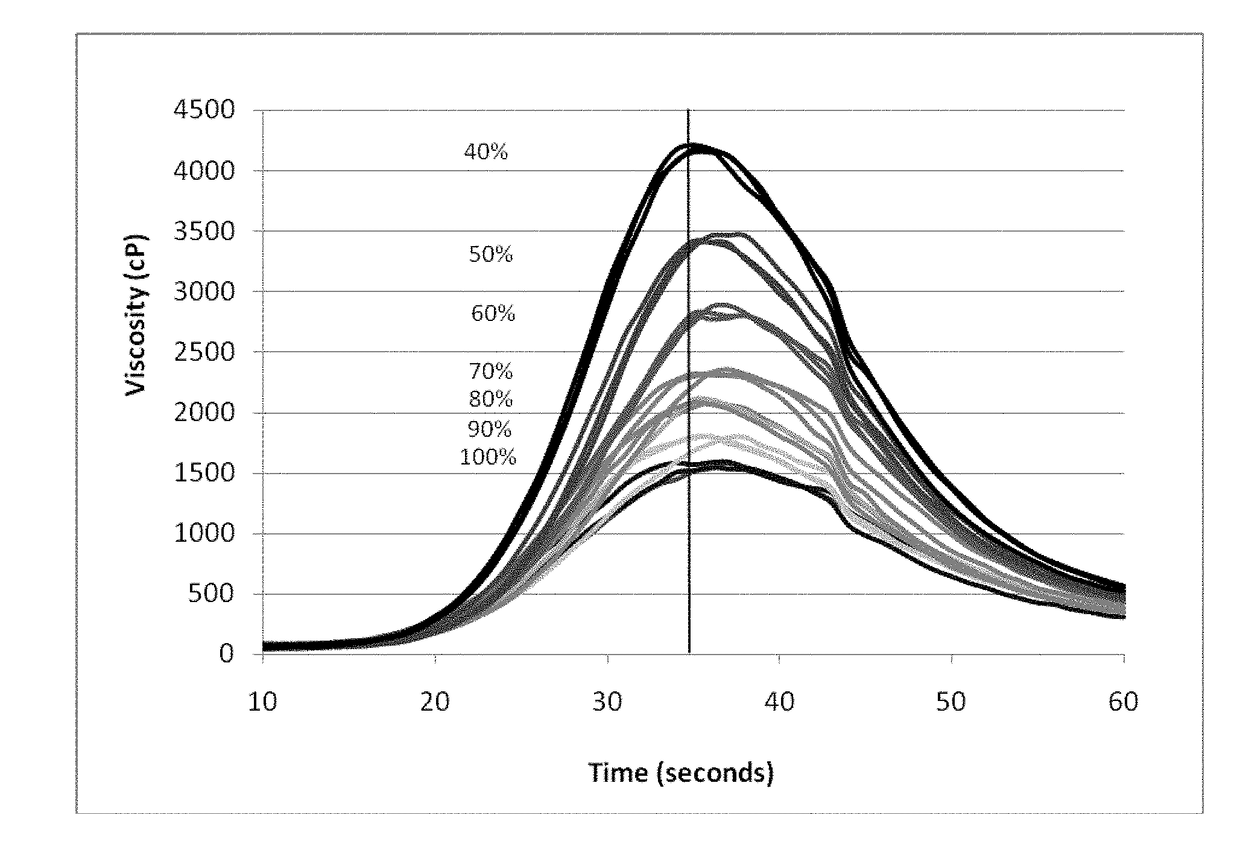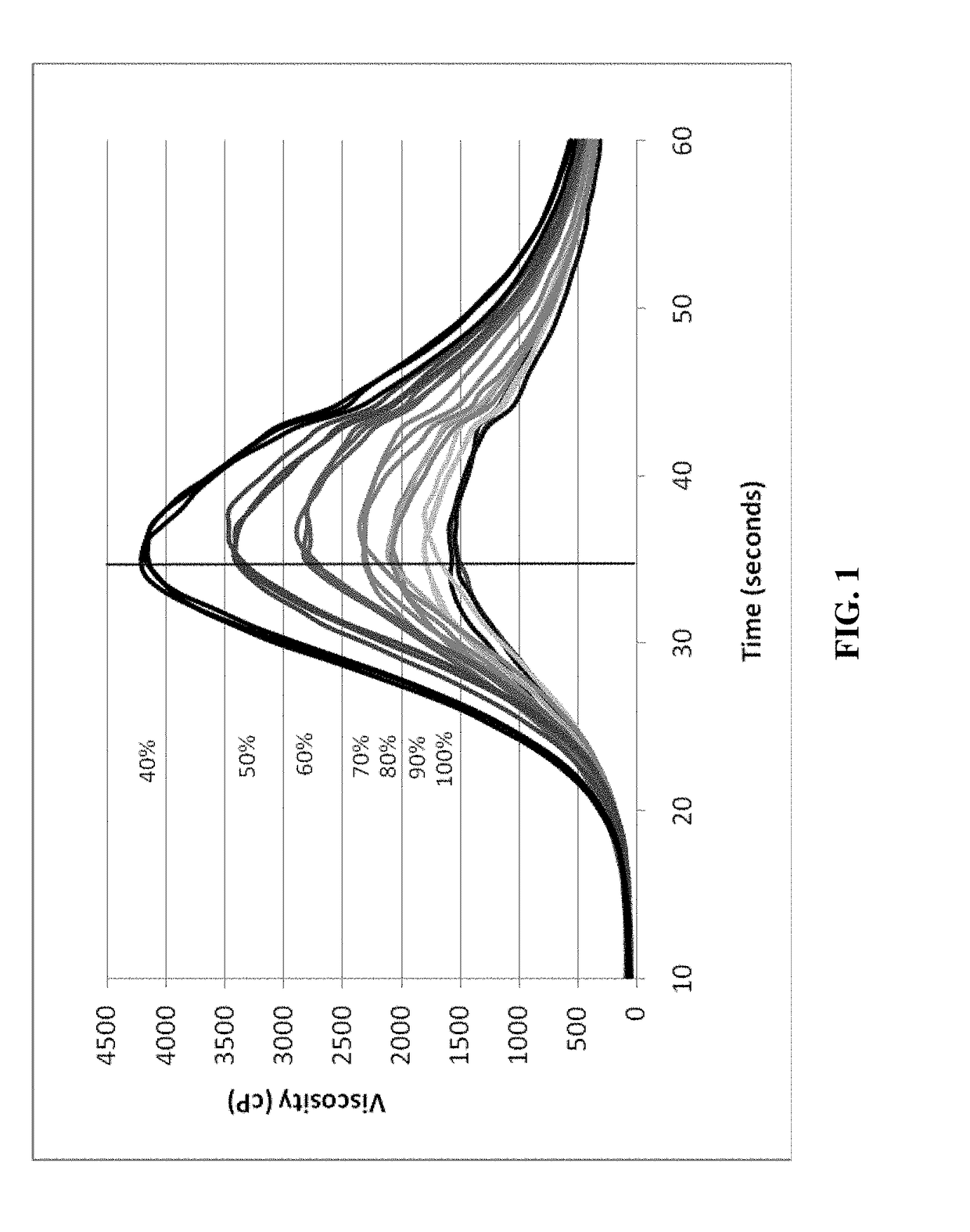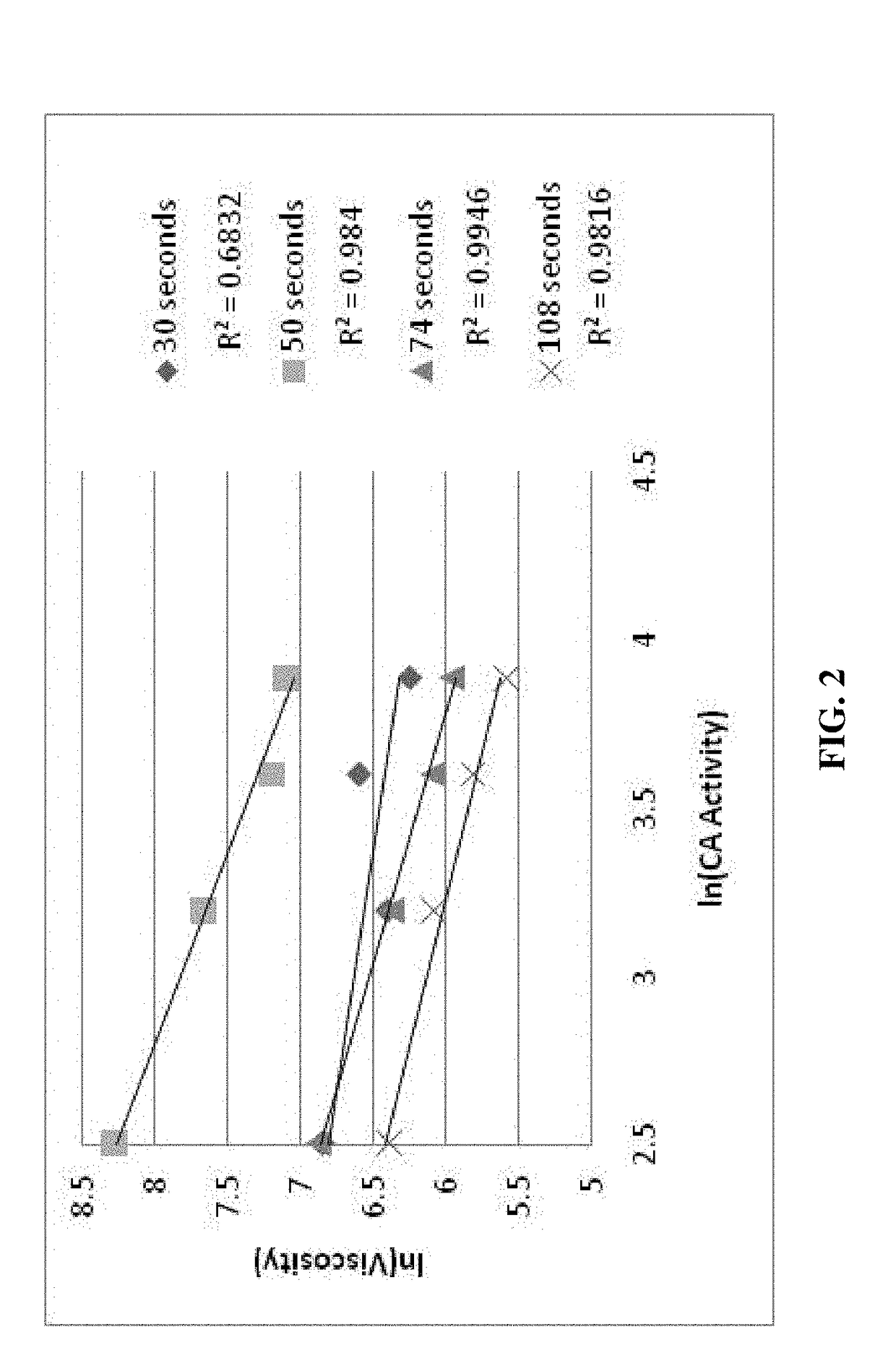Methods for detecting and measuring polysaccharide-hydrolyzing enzymes
detection method technology, applied in the field of detection and measurement of polysaccharide hydrolyzing enzymes, can solve the problems of poor ethanol yield, time-consuming and labor-intensive methods for detecting and measuring transgenic plant material containing a polysaccharide hydrolyzing enzyme, and enzyme availability, etc., to achieve rapid and reliable assay
- Summary
- Abstract
- Description
- Claims
- Application Information
AI Technical Summary
Benefits of technology
Problems solved by technology
Method used
Image
Examples
example 1
I. Enzyme Calibration Curve Construction Using % Admix.
[0071]1) Creation of Calibration Samples
[0072]Corn Event 3272 (as described in U.S. 2006 / 0230473 comprising the thermotolerant alpha-amylase 797GL3) and commodity corn (negative background) (i.e. Yellow dent) was ground separately (i.e., dry milled) to flour in a Perten LM3600 Disc Mill (setting 0) (Perten Instruments AB; Huddinge, Sweden). Moisture content was measured using a Mettler Halogen Moisture Analyser to calculate total dry weight (data not shown). Admixtures of ground Event 3272 seed was mixed into ground commodity corn to make admixes of 40%, 50%, 60%, 70%, 80%, 90% and 100% using a calculated total dry weight of 500 g.
[0073]2) Viscosity Measurement
[0074]Approximately 9-20 grams of each admixture was weighed separately into viscometer vessels. Water was next added to each tube to create a slurry containing about 28% dry solids. Corn slurry has very good buffering capacity, so it is not nece...
example 2
Fast Assay for Corn Amylase Using a Standard Coffee Maker
[0091]1) Creation of Calibration Samples
[0092]Calibration samples were created essentially as described in (Example 1) above. Corn Event 3272 (comprising the thermotolerant alpha-amylase 797GL3) and commodity corn (negative background) (i.e. Yellow dent) were ground separately (i.e., dry milled) to flour in a Perten LM3600 Disc Mill (setting 0) (Perten Instruments AB; Huddinge, Sweden). Moisture content was measured using a Mettler Halogen Moisture Analyser to calculate total dry weight (data not shown). Admixtures of ground Event 3272 seed was mixed into ground commodity corn to make admixes of 40%, 50%, 60%, 70%, 80%, 90% and 100% using a calculated total dry weight of 500 g.
[0093]2) Generation of a Calibration Curve
[0094]Approximately 15 grams form each admix was added separately to a coffee filter fitting a standard 4 cup coffee maker such as a Mr. Coffee® 4-Cup Dispenser (Sunbeam Products, Inc.) (or any non-programmable s...
PUM
| Property | Measurement | Unit |
|---|---|---|
| temperature | aaaaa | aaaaa |
| temperature | aaaaa | aaaaa |
| temperature | aaaaa | aaaaa |
Abstract
Description
Claims
Application Information
 Login to View More
Login to View More - R&D
- Intellectual Property
- Life Sciences
- Materials
- Tech Scout
- Unparalleled Data Quality
- Higher Quality Content
- 60% Fewer Hallucinations
Browse by: Latest US Patents, China's latest patents, Technical Efficacy Thesaurus, Application Domain, Technology Topic, Popular Technical Reports.
© 2025 PatSnap. All rights reserved.Legal|Privacy policy|Modern Slavery Act Transparency Statement|Sitemap|About US| Contact US: help@patsnap.com



